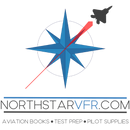
Understanding Left-Turning Tendencies in Airplanes
By Josh Page, CFI
Ever heard your flight instructor say, “More right rudder”? This is one of those phrases you’ll hear over and over again in your flight training journey.
Here’s the deal — An aircraft doesn’t always fly in a perfectly straight line, especially during takeoff and climb. One of the fundamental aerodynamic concepts in aviation is left-turning tendencies.
These natural forces cause an airplane to yaw or roll left, particularly in a single-engine, propeller-driven aircraft. Understanding these forces is helps you maintain control and making precise corrections during flight.
Why Left-Turning Tendencies Matter
Left-turning tendencies are primarily caused by four aerodynamic effects: torque, spiraling slipstream, gyroscopic precession, and P-factor (asymmetric thrust). Each plays a unique role, especially at high power settings and low airspeeds, such as during takeoff. Let’s take a quick look at all four of them:
-
Torque: Newton’s Third Law in Action
The first left-turning tendency is torque, a result of Newton’s Third Law of Motion: “For every action, there is an equal and opposite reaction.” When a propeller rotates in one direction (typically clockwise as viewed from the cockpit), the engine and propeller exert an equal and opposite force, causing it to roll in the opposite direction—counterclockwise (or to the left).
Torque is most noticeable when power is applied suddenly — for example, during takeoff. If uncorrected, it can cause a yawing movement to the left, requiring the pilot to use right rudder to maintain coordinated control.
-
Spiraling Slipstream: The Propwash Effect
Another key left-turning tendency is spiraling slipstream, also known as propwash. As the propeller spins, it creates a spiral pattern of airflow that wraps around the fuselage and strikes the left side of the vertical stabilizer (rudder). This force pushes the tail to the right, causing the nose to yaw left.
This effect is most prominent at low airspeeds and high power settings, such as during takeoff or a go-around. How do you counter this left-turning tendency? The same way you would counteract any of the other left-turning tendencies — by applying right rudder pressure to keep the nose aligned with the runway.
-
Gyroscopic Precession: A Rotating Force
Gyroscopic precession is a bit more difficult left-turning tendency to understand. It especially plays a major role in tailwheel (taildragger) aircraft. This effect occurs because the spinning propeller acts as a gyroscope, meaning it resists changes in its axis of rotation.
So what does that mean exactly? When the pitch attitude changes—such as when the tail of a taildragger rises during takeoff—the force applied to the propeller does not take effect immediately at the point of contact. Instead, due to gyroscopic principles, the force is felt 90 degrees ahead in the direction of rotation.
Since most aircraft have clockwise-spinning propellers (as seen from the cockpit), this means a pitch-up change causes a force that yaws the airplane to the left.
While gyroscopic precession is most noticeable in tailwheel aircraft, it can still play a role in tricycle-gear airplanes when performing aggressive pitch changes, such as a sudden rotation on takeoff. How do you correct this? By now, you should be able to answer this quickly — Applying right rudder!
-
P-Factor (Asymmetric Thrust): The Angle of Attack Effect
This one is my favorite, and it’s also the most significant left-turning tendency during a climb: P-factor, or asymmetric thrust. This occurs because the descending propeller blade (on the right side) generates more thrust than the ascending blade (on the left) when the aircraft’s nose is pitched up.
This happens due to the angle of attack of the propeller blades. Think of it like the descending blade is getting a “bigger bite of air” than the ascending blade. When the aircraft is in a climb, the descending blade meets the relative wind at a greater angle, producing more lift (thrust). The result? A yawing force to the left.
P-factor is most pronounced at high angles of attack, such as during takeoff, a go-around, or slow flight. When I am teaching students slow flight or power off stalls, I make it a point to not move on to any other maneuver until they can clearly see for themselves just how much the aircraft is yawing to the left without enough right rudder pressure.
Improve Your Skills in the Cockpit
Left-turning tendencies are a natural part of aerodynamics in single-engine aircraft. While they are most noticeable during takeoff and climb, they can also affect performance during slow flight, go-arounds, or power adjustments. By understanding the causes—torque, spiraling slipstream, gyroscopic precession, and P-factor—pilots can anticipate and correct for these tendencies with proper control inputs.
The key takeaway? The right rudder is your best friend. Mastering rudder coordination will lead to smoother, more controlled flights and better aircraft handling, making every takeoff and climb a smooth experience. And a bonus: If you master your rudder coordination, you won’t have to hear your instructor say, “More right rudder” anymore!
By Josh Page, CFI
Northstar Aviation References brings you the Pre-Tabbed ASA FAR/AIM, DIY tabs for your FAR/AIM and other pilot resources so that you can more easily study the regulations that form the foundation of your flying career or hobby. Have any questions? Check out our FAQs page or contact us. Check out other blog posts here.
